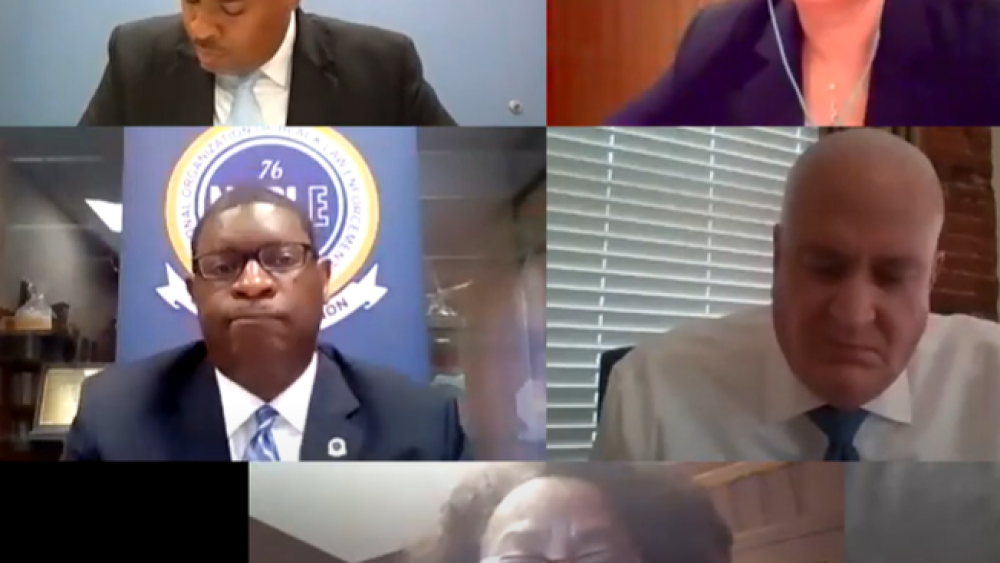The in-custody death of George Floyd was the catalyst for widespread protests this year regarding police use of force amid claims of racial bias. But Floyd is only the latest flashpoint in a conversation that has become the source of increasing tension between law enforcement and the public.
The National Law Enforcement Museum recently hosted a webinar on anti-bias programs for police officers. The panelists discussed the difference between racism and bias, the components of an effective anti-bias training program and why anti-bias training shouldn’t just be limited to law enforcement. Here are some top takeaways from the discussion.
Memorable quotes
“At its best, anti-bias training is a long-term thing. It’s not a one-day workshop,” Guillermo Lopez Jr., Co-Director of the Law Enforcement Division, National Coalition Building Institute, said. “Once we identify the anti-biases, the hard work is in helping people not let them [those biases] control their thinking.”
“The interactions and community-based relationships that we build long before we have crisis in our communities is so vitally important to this,” Patrick Yoes, National President of the National Fraternal Order of Police, said. “We can put water on the fire all we want but at the end of the day it’s about those relationships we created in advance that allowed us to not only learn about bias, but also allow us to truly understand different cultures.”
Top takeaways
1. Defining “bias” and “racism”
Successful anti-bias training starts with everyone getting on the same page about what the conversation is truly about and how the issues are defined, and that starts with defining “bias” and “racism.” Oftentimes these two things are conflated; but if someone has bias it does not automatically mean they are racist, panel moderator and Police1 columnist Booker Hodges argued. How you define these terms will ultimately determine how you approach them.
Yoes added that adult learners process information differently and successful training is all about the delivery. Defining these terms so that everyone is on the same page is a key part of that. It is easy to offend someone when talking about bias; if the subject is not approached properly it falls on deaf ears.
Dr. Tracie Keesee, Co-Founder and Senior Vice President of Justice Initiatives, Center for Policing Equity, added that anti-bias training cannot just be checking off a box – that it’s important to get over the sensitivity of issues such as racism in order to have meaningful dialogue. “This is about race as well and you can’t avoid that conversation and often we use this training to avoid that conversation,” Keesee said. “What is the shared language? What is the definition we share on this? What do we need to do to make sure we’re all trying to solve the same issues together?”
2. Key components of an anti-bias program
A successful anti-bias program is not one-size fits all – the police department receiving training must be assessed to ensure the program can be designed to fit that PD’s unique needs, Lopez said. In order to have the hard conversations that are key to productive anti-bias training, the facilitators need to build credibility with their audience - they have to be trusted by department staff. Lopez acts as a representative from the community, while his co-facilitator, retired chief Fabienne Brooks, acts as the law enforcement representative.
Lopez stressed that a successful program doesn’t mean that every officer in the department is going to embrace it. Some will want nothing to do with it. But the ones who take to it are the ones who will create the change within the institution. You won’t win everyone over, but winning someone over is what matters.
3. Who else needs anti-bias training?
The panel argued that anti-bias training shouldn’t be limited to law enforcement officers – the lessons here are just as important to share in schools and communities as bias goes both ways. Lopez and Brooks do an assessment with the community just like they assess the PD when they develop training, asking community members the same questions they ask police: what’s going well, what could be better and what they would change.
Learn more
Unconscious bias training for law enforcement
Implicit bias and decision-making
4 ways officers can improve neighborhood relationships
Understanding bias and power in community policing



